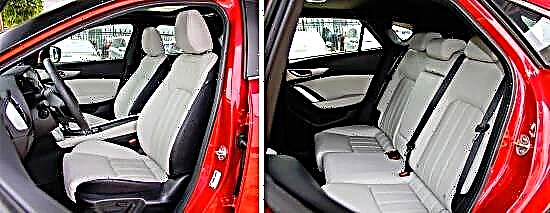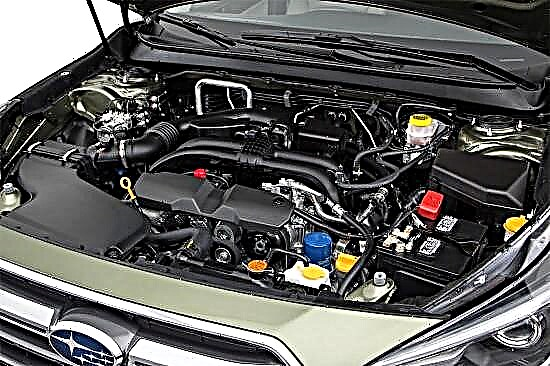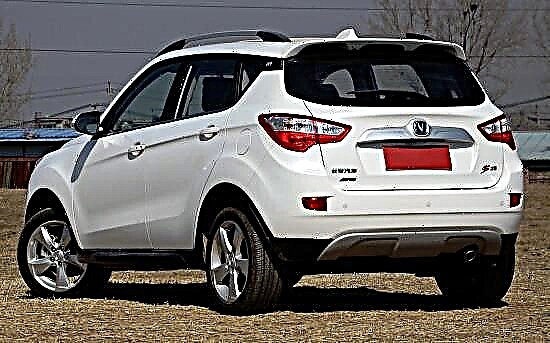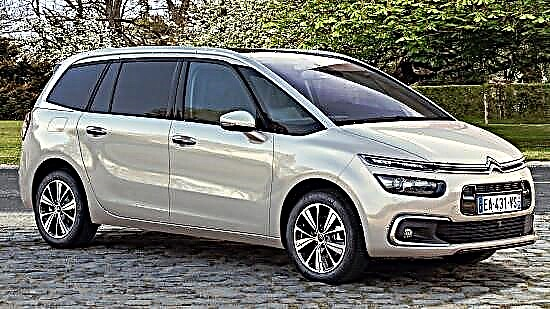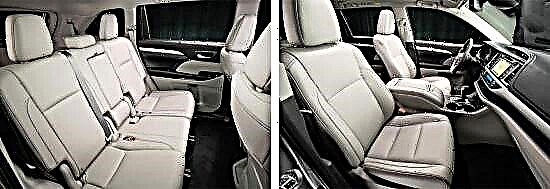The third Toyota Highlander is a typical child of his time, possessing a great variety of talents - he is chosen for: aggressive appearance, interior space, good cross-country ability, rich equipment and the famous "surname" (cars of this brand are famous for their unpretentiousness and reliability) ... In addition, he a wonderful family man - this is, perhaps, the most accurate characteristic describing this large car.

In its third generation, the Highlander made its debut in the spring of 2013 at the New York Auto Show - compared to its predecessor, it has noticeably matured and dignified, acquired new engines and transmissions, and also received much richer functionality.
In March 2016, all in the same "Big Apple", the premiere show of a restyled version of this mid-size crossover took place - its main acquisitions were: a redesigned exterior, a modernized V6, a new gearbox with eight ranges and an expanded list of equipment.

Outwardly, the "Highlander" of the third generation is a real alpha male: he looks brutal and complete, but at the same time not too flashy and moderately modern. The car is as aggressive as possible from the front - the credit for this is attributed to the "squinted" headlights and a huge "grill" of the radiator grille, reaching the lower edge of the bumper. But from other angles it looks no worse: a powerful silhouette with a pronounced relief of the sidewalls and rounded-square wheel arches and a harmonious "sirloin" part with high expressive lanterns, cut glass and a neat bumper.

The “third” Toyota Highlander is a very large crossover: the length of the “Japanese” is 4890 mm, and its height and width are 1770 mm and 1925 mm, respectively. The wheelbase of the SUV reaches 2,790 mm, and the ground clearance is 200 mm. Depending on the modification, the five-door in a "combat" condition weighs from 1880 to 2205 kg.

The interior of the crossover "plays" in unison with the exterior - it looks like a man: non-trivial, sweeping and a little rough. In addition, the inside of the car impresses with a neat fit of all elements, impeccable ergonomics without any punctures and high-quality finishing materials (nice plastics, metal and wood-like inserts, genuine leather). The front panel has a complex, but interesting architecture, and in the central part it houses an 8-inch "TV" of the multimedia system and a visual "microclimate" unit with its own display and large switches. A very large multifunctional steering wheel and a pretty, not overloaded with information instrument cluster with a 4.2-inch display between the analog dials harmoniously fit into the overall picture.

The front seats of the Toyota Highlander offer an American-style imposing, but quite comfortable fit, a bunch of all kinds of electric adjustments, heating and ventilation. Passengers in the middle row have the opportunity to adjust the sofa in the longitudinal direction and in the level of the backrest, but the idyll is disturbed by its flat profile. The "gallery" is frankly cramped: a maximum of children of secondary school age will be able to comfortably accommodate here.

The cargo compartment of the "Highlander" of the third incarnation ranges from 269 to 2370 liters, and when both rear rows of seats are folded down, a practically flat floor is formed. In addition to this, it also provides an underground niche where the necessary tools are stacked. "Dock", which is included in the initial configuration of the SUV, is fixed under the bottom.
Specifications. In the Russian market for the "third" Toyota Highlander only one power unit is possible - the engine compartment is "filled" with a 3.5-liter (3456 cubic centimeters) gasoline V-shaped "atmospheric" with direct injection, variable-length intake tract, 32-valve timing and a valve timing mechanism at the inlet and outlet.
It produces a maximum of 249 "horses" at 5000-6600 rpm and 356 Nm of rotational potential at 4700 rpm, and works in conjunction with an 8-speed "automatic" Direct Shift and intelligent all-wheel drive technology.
In normal mode, most of the traction goes to the front wheels, but if necessary, the electronically controlled JTEKT multi-plate clutch connects the rear axle, directing up to 50% of the moment to it.
On hard surfaces, the car feels more than confident: from one place to the first "hundred", it rushes after 8.8 seconds, accelerates to 180 km / h and "drinks" about 9.5 liters of fuel in combined conditions.
In other markets, the Highlander 3 can also be purchased in a front-wheel drive version, equipped with a 2.7-liter four-cylinder petrol engine (188 horsepower and 252 Nm of torque generated) and in a hybrid version with a 3.5-liter V6, three electric motors and lithium-ion batteries (280 "Stallions" and 337 Nm).

At the heart of the third generation Toyota Highlander is the "stretched bogie" from the Camry sedan with a longitudinally located power unit, a monocoque body in which high-strength steel varieties are widely used, and an independent front suspension with McPherson struts. On the rear axle of the car, a multi-link system is installed (the transverse stabilizers are used "in a circle"), borrowed from the Lexus RX.
The brakes of the crossover are ventilated discs both front and rear, working with ABS, EBD and other modern electronics, and its steering complex is represented by a rack and pinion gear and an electric control amplifier.
Options and prices. In 2017, on the Russian market, the third-generation restyled Highlander is offered in three versions: Elegance, Prestige and Safety Suite.
- For the first, they ask for a minimum of 3,226,000 rubles, and its functionality combines: six airbags, 19-inch wheel rims, light and rain sensors, an electric tailgate, a keyless entry system, ABS, EBD, BAS, cruise control, VSC, rear parking sensors, ERA-GLONASS system, "music" with six speakers, a multimedia complex with a 6.1-inch screen, a rear-view camera, leather interior trim and a three-zone "climate". In addition, the starting version includes: heated front and rear seats, electric heating of the steering wheel and windshield in the rest of the windshield wipers, ISOFIX mounts and some other equipment.
- For an intermediate configuration, you will have to pay at least 3,374,000 rubles, and in addition it "flaunts": a more advanced infotainment center with an 8-inch display, blind spot tracking technology, a navigator, electric drive and ventilation of the front seats, side sun blinds for riders of the second row, etc.
- The "top" modification costs from 3,524,000 rubles, and its privileges are: adaptive cruise control, four panoramic cameras, a JBL premium audio system with 12 speakers, front parking sensors, as well as systems for monitoring road markings, recognition of road signs , driver fatigue monitoring and frontal collision warning.

